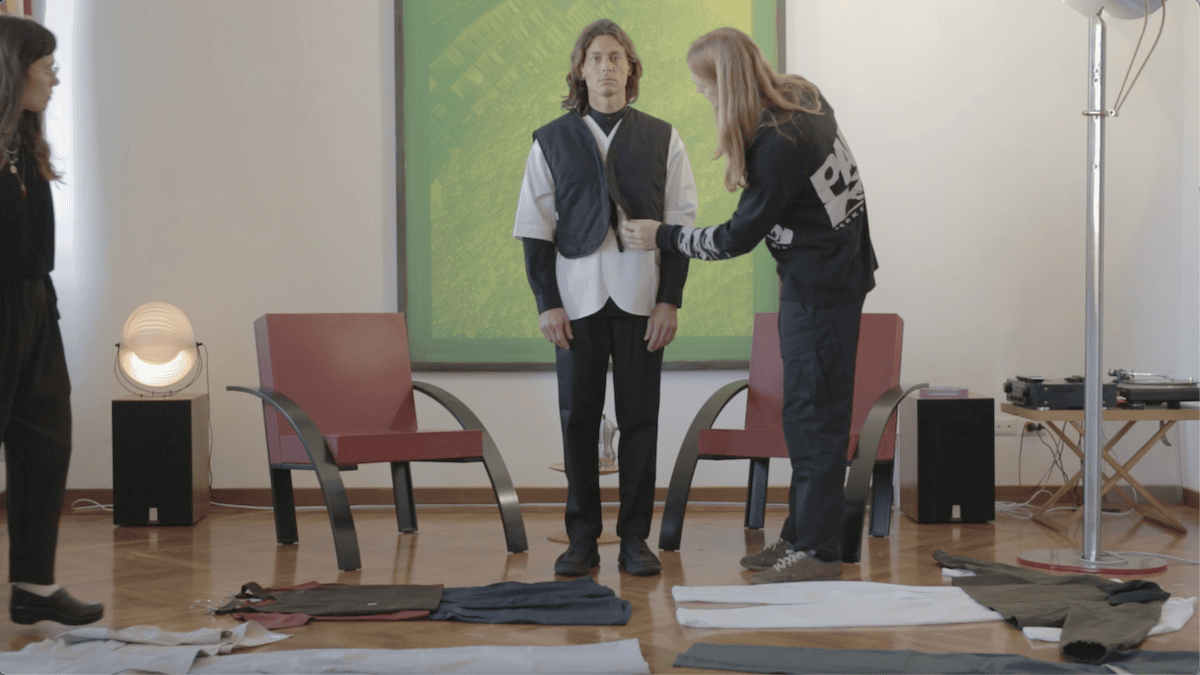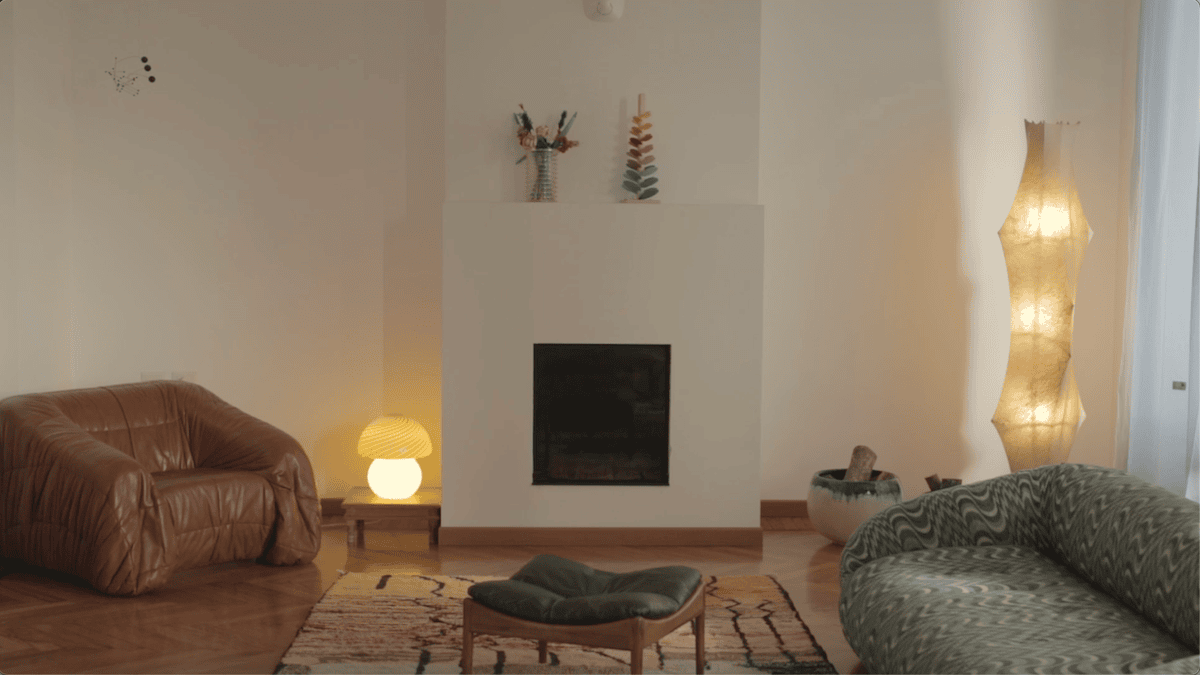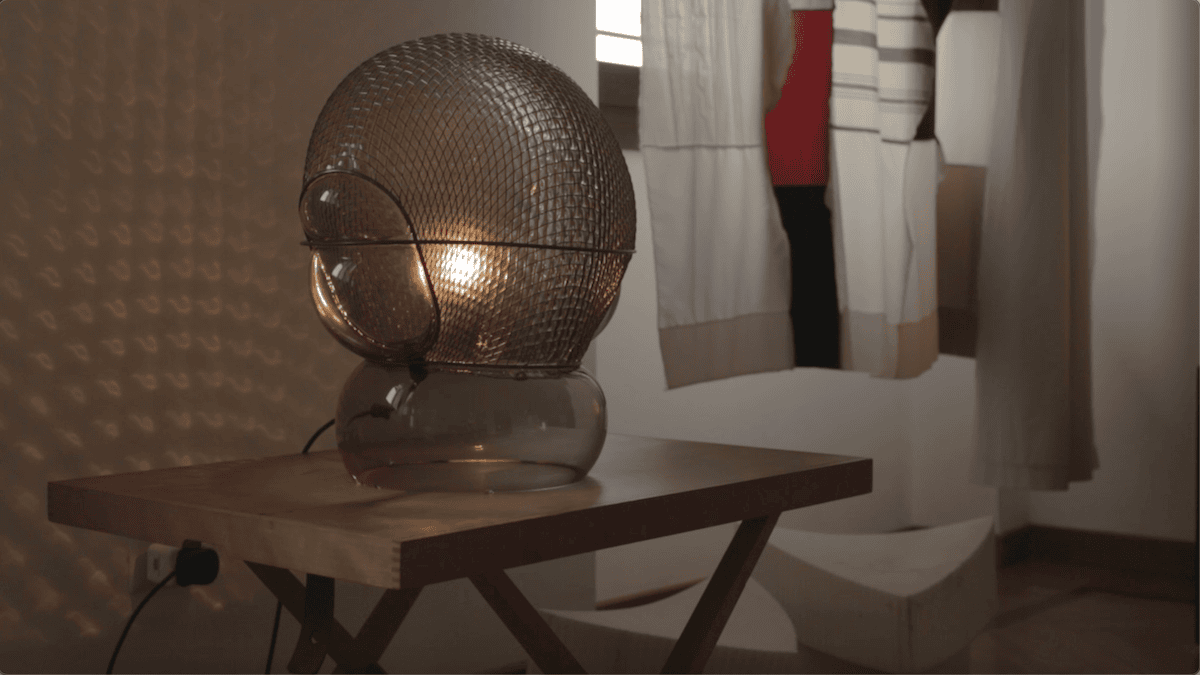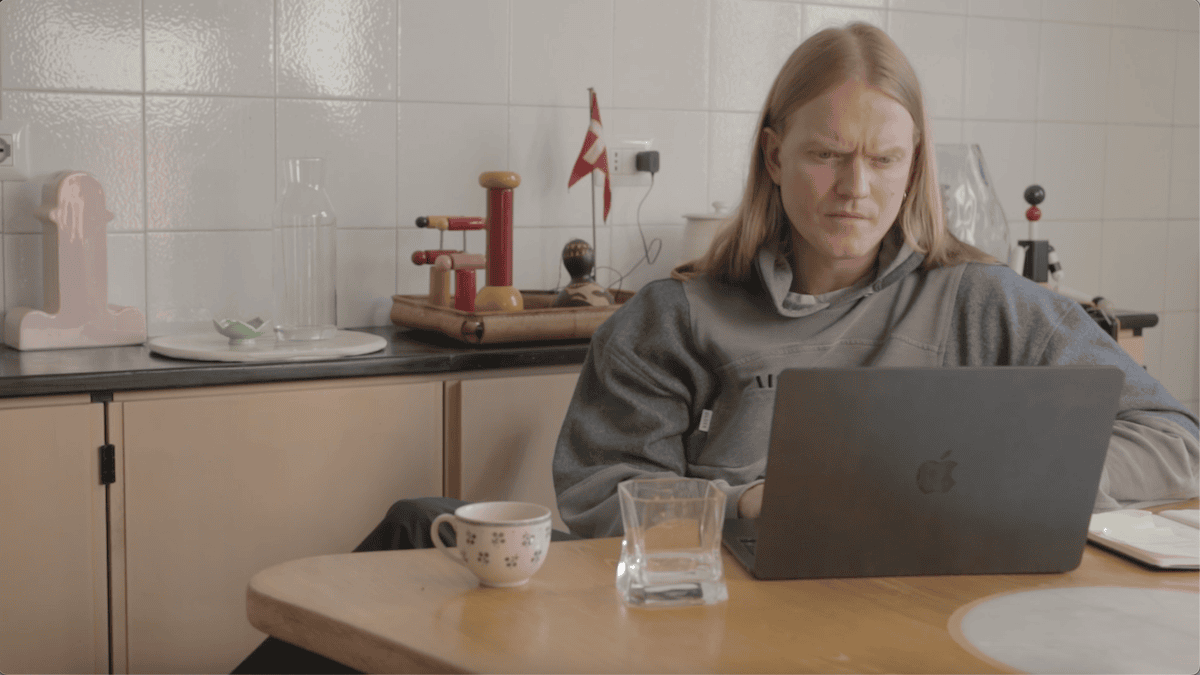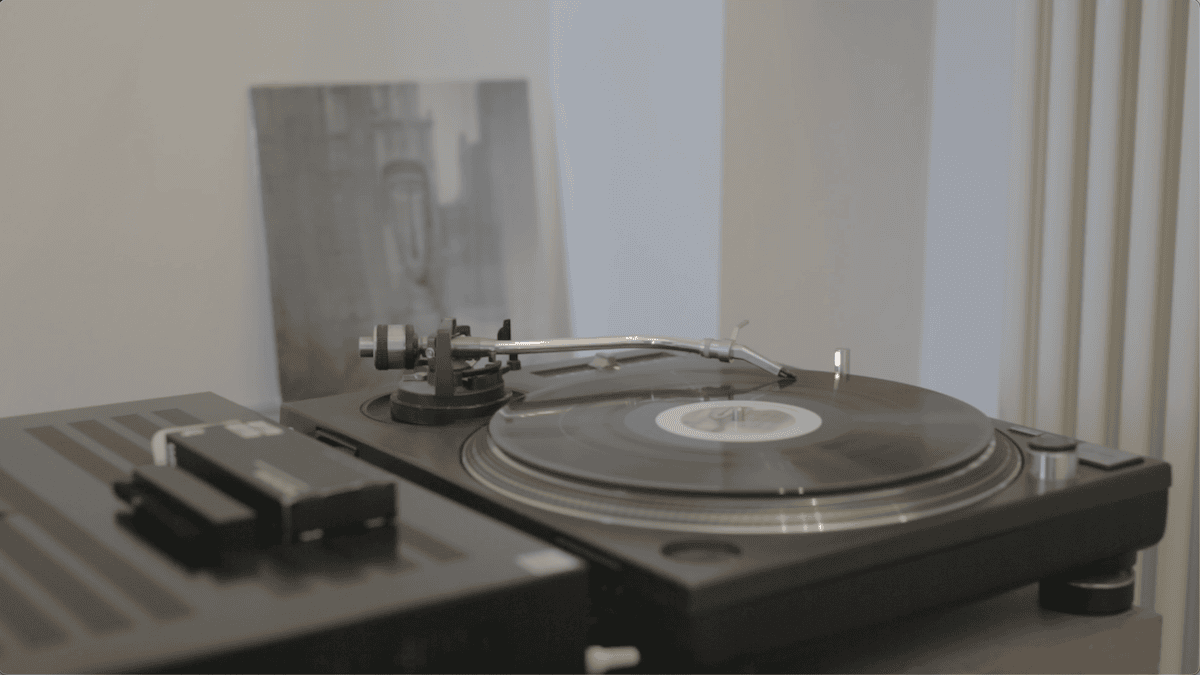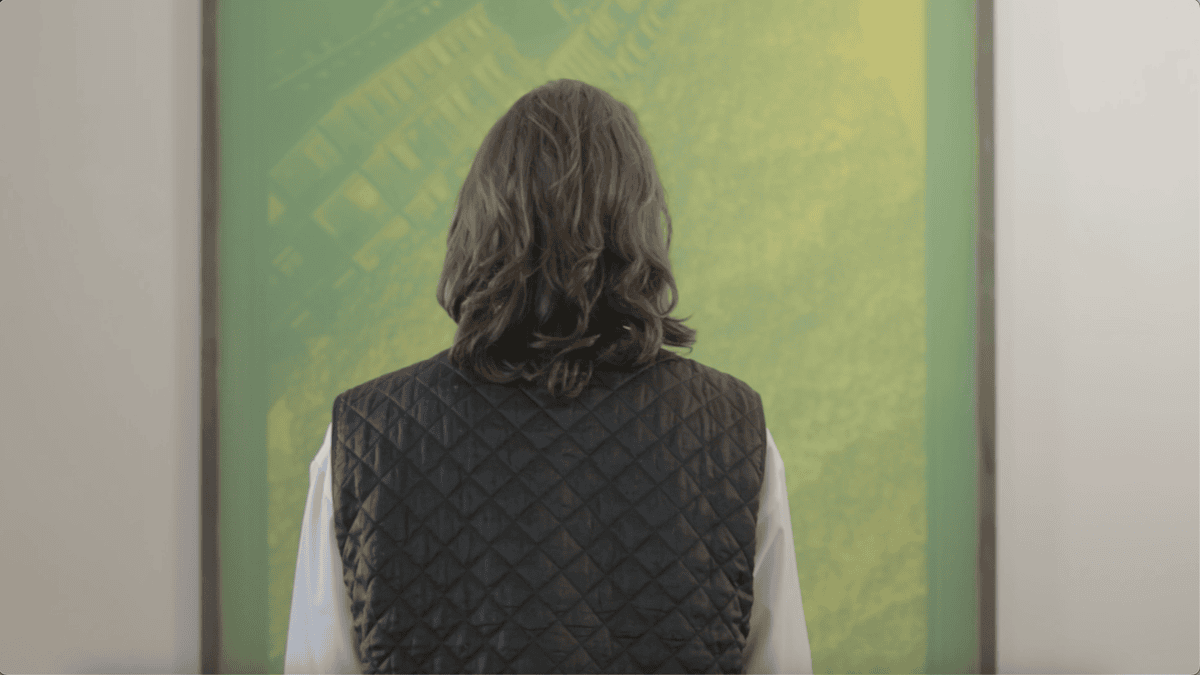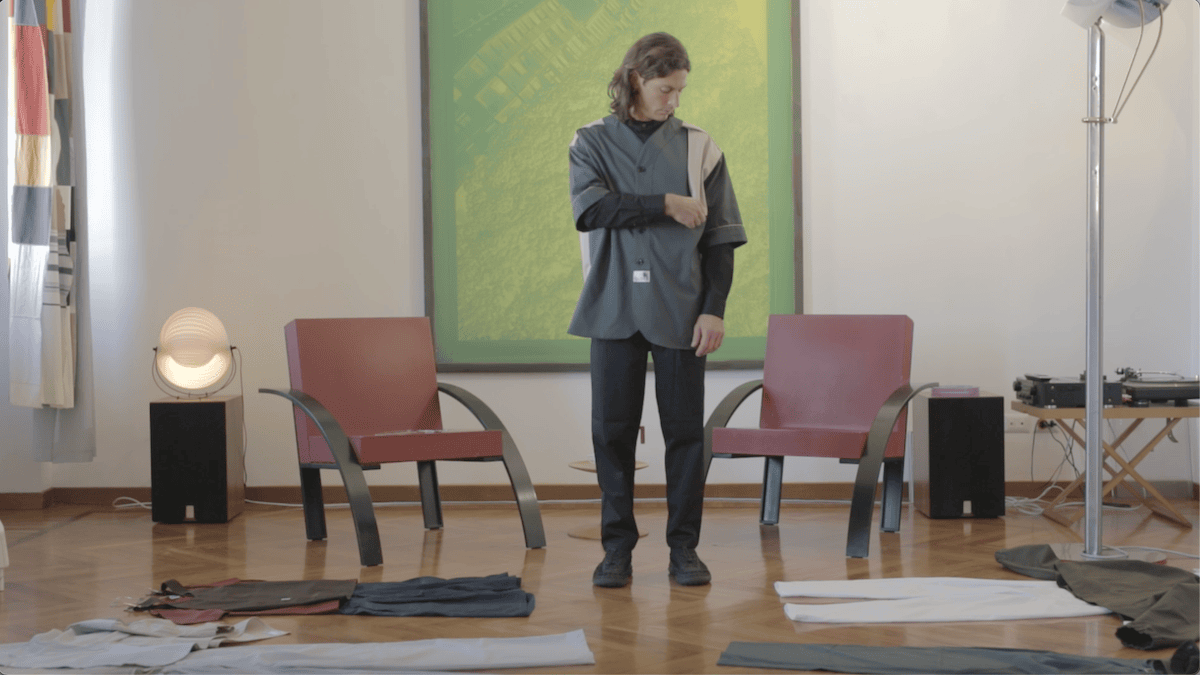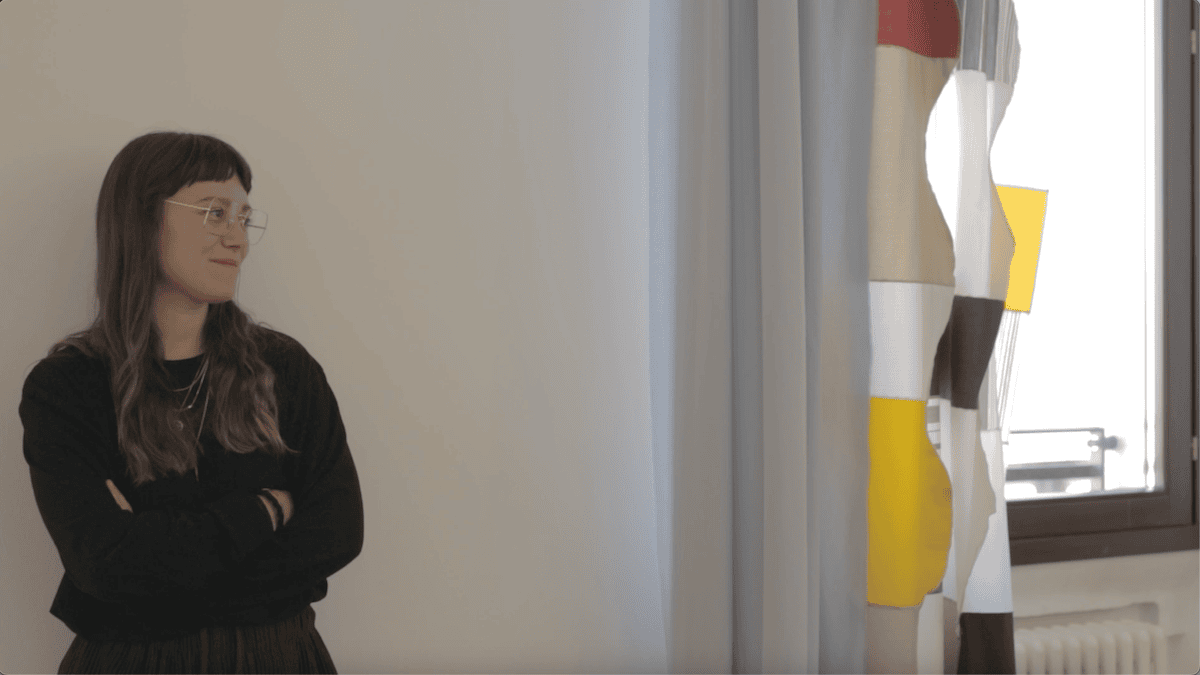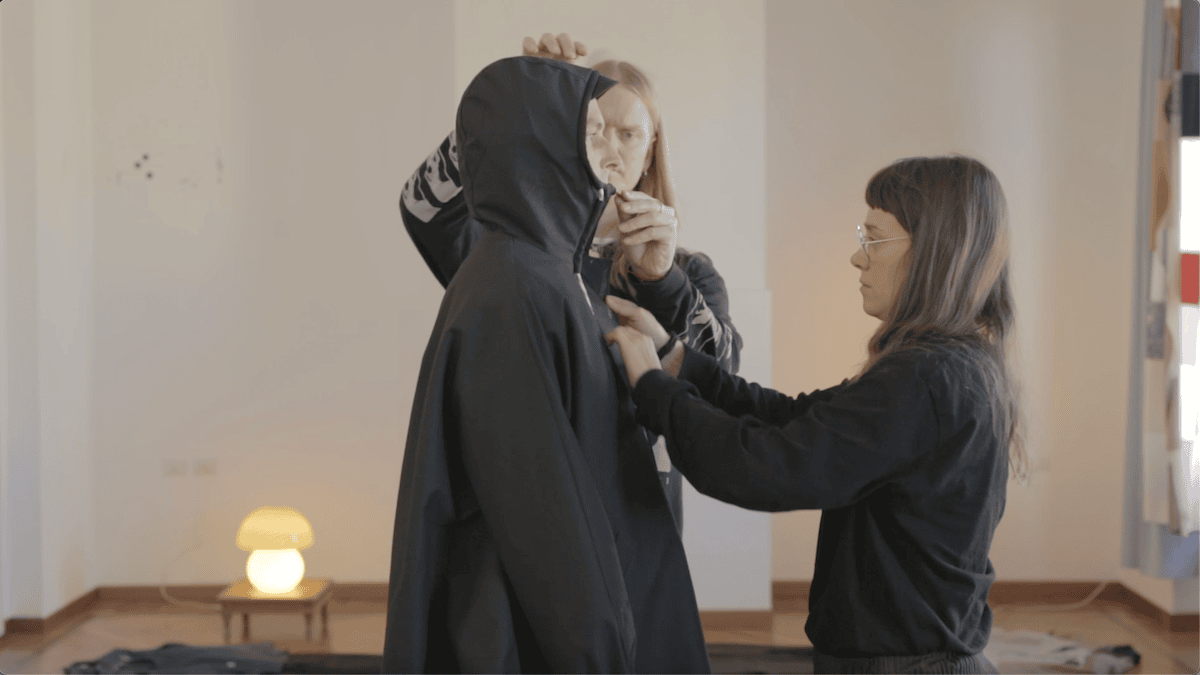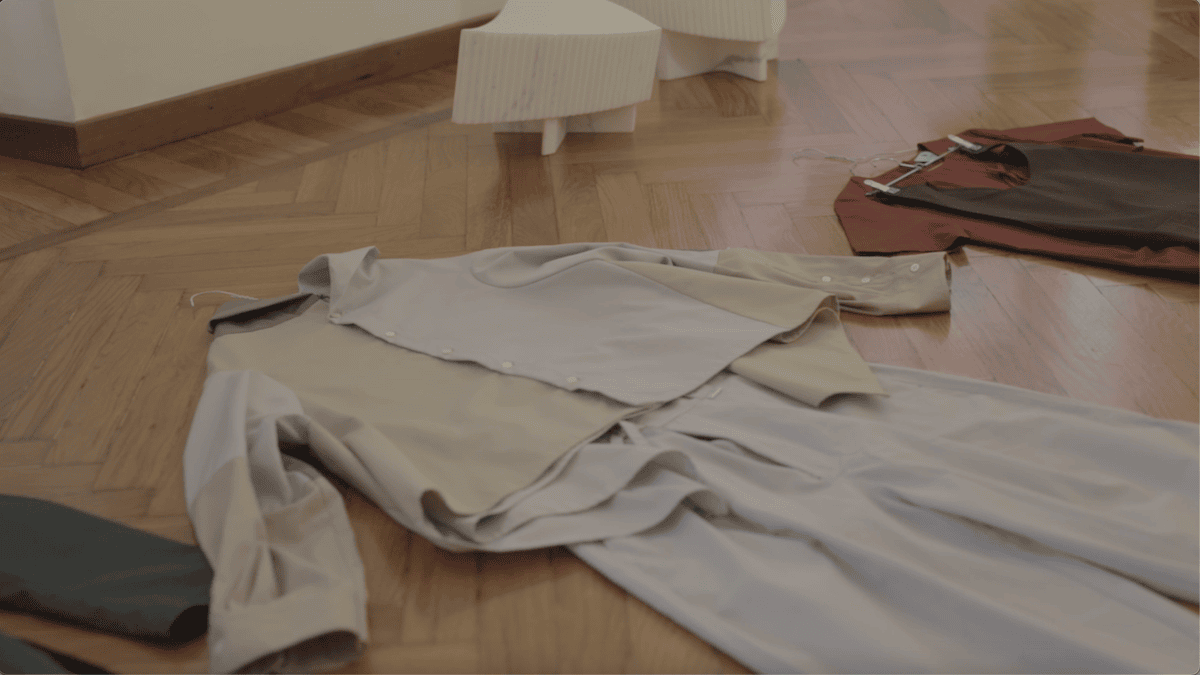KITES is a video produced by OLDER Studio that provides an authentic portrayal of the creative process and the interplay between different elements in the studio’s design work. The video follows Letizia Caramia & Morten Thuesen, the founders of the studio, as they go about their day inside the Milanese casa bottega studio, in the midst of the fitting process for their industrial uniforms. KITES is part of a series of short documentaries produced in-house, which reflect the studio’s values and dedication to industrial design. The video showcases the testing of each uniform and the ambiance in which each piece is created. The combination of calm and hectic moments, attention to detail and spontaneous creativity, and the use of an unedited angle, adds depth to the exploration of OLDER Studio’s approach to industrial design. KITES is directed by Eliott Tsaramaro & Francesco Tagliavia.
Ilaria Sponda: What’s behind the Kites series?
Letizia Caramia & Morten Thuesen: KITES is a series of documentary videos that opens up the multidisciplinary nature of OLDER Studio, kinda like a fly on the wall in various processes of the studio’s activities. The first video shows a uniform fitting process in our studio in Milan. The uniforms we make are developed in a universe full of objects that either we have designed ourselves or collected through time, so we both parts as one. As Ernesto Rogers declared in his “From the Spoon to the City” quote, we believe a lot in the idea of holistically extending the world of the studio, as this is how we are as designers and as people.
IS: Following a day in your life is the fil rouge connecting those short stories. How does OLDER Studio intersect with your private life?
LC&MT: They are completely interwoven with each other, there are no differences at the end of the day. OLDER Studio is a pseudonym for Letizia and I working together. We are a duo in design, partners in business, a couple in private, and parents to a little boy, so in many ways, OLDER is a deeply private story that is executed in an industrial setting. The uniform is perhaps the most democratic piece of clothing, we see them as pieces of technology, a tool for the user. OLDER is an open-source brand that offers a narrative for all our hospitality clients worldwide, the design collectors who buy our objects, and the institutions that exhibit them. It’s kinda a melting pot of people’s own stories that choose us, we are simply facilitators, a canvas for them to express themselves.
IS: You say the studio’s a values testament to industrial design. How did you first come to industrial design?
LC&MT: We design, produce, and supply uniforms to a wide range of industries, from Tate Modern to a kebab shop in Berlin – industry is the key word here, as they are industrial in nature due to their usage. A uniform has to function within a wide range of industrial criteria, perhaps more than any other industrial object, as a uniform gets washed after every usage, meaning longevity and function are essential. Approaching uniforms through this prism or theory, suddenly we started to think that we could apply this approach to other sectors within design. All the objects we make are custom-made an artisanal and produced in Tuscany in small quantities. The artisan who makes all our prototypes is Letizia’s father, so every piece from our hand is very personal. All the pieces we design are something we make for ourselves, for our own personal needs for our home. We don’t believe the world we live in, really needs new stuff, a new chair or something like that, so if we make something it has a meaning and originates from an authentic need in our own life, something we can not find elsewhere, hence why we only produce a few pieces once a while. No need, no object.
IS: The place your uniforms are conceived within seems a fertile ground for projecting. Space is a precious commodity.
LC&MT: Space and what occupies a space, how it’s composed and visually articulated, is something we spend a lot of time thinking about and is also the reason why we see uniform as the mediator for all the things that make a space. It can, if done properly, really reflect the intention of a place in the most elevated way, if the uniform is designed to mirror the intention of a space. I guess this is really the red thread in the thinking of our studio.
